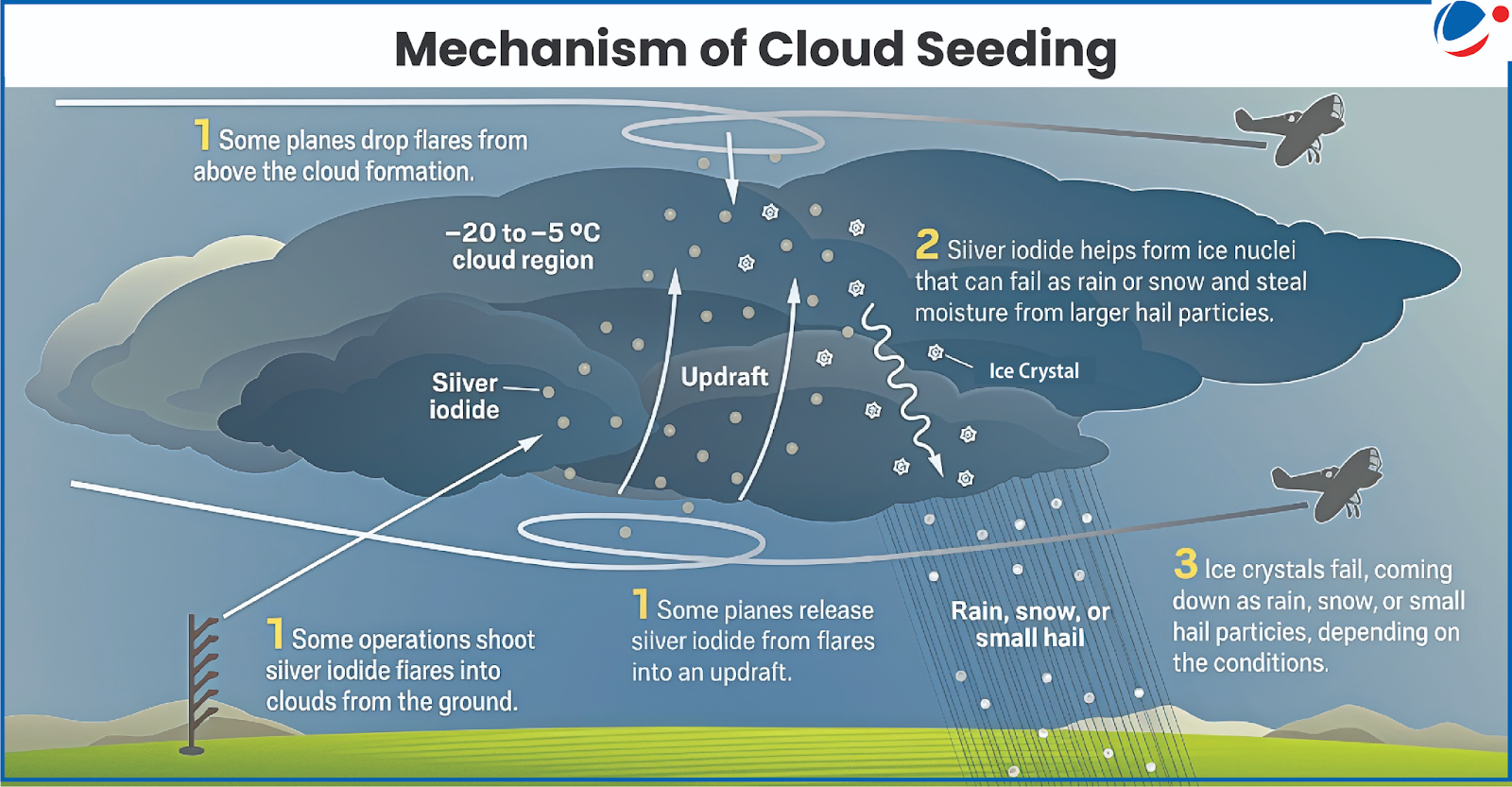Authorities in Delhi conducted an artificial rain experiment to reduce pollution; however, air quality indicators remained largely unchanged.
Every winter, residents of Delhi-NCR wake up to a familiar sight, thick smog enveloping the city which reduces visibility to meters and turns the air into a toxic mix. On October 29, 2025, despite the artificial rain experiment conducted a day earlier, the air quality index (AQI) remained in the 'poor' category at 275, with areas like Wazirpur recording levels of 327. It highlights the need to assess whether policy actions are treating the causes or merely the consequences.
The Delhi government's collaboration with IIT-Kanpur to conduct cloud seeding trials aimed at washing away pollutants through artificial rainfall. This represents the latest attempt to combat the capital's air pollution emergency.
Understanding Air Pollution in Delhi: A Multi-Faceted Crisis
Air pollution in Delhi is not a seasonal inconvenience but a year-round public health emergency that intensifies during winter months. The Air Quality Early Warning System for Delhi recorded an ambient temperature of 18.8 degrees Celsius on October 29, 2025, conditions that trap pollutants close to the ground due to low wind speeds and temperature inversions.
The sources of Delhi air quality deterioration are multiple. Vehicular emissions from millions of vehicles contribute to the toxic mix. Industrial emissions from surrounding areas, construction dust, and the practice of stubble burning in neighboring states like Punjab and Haryana add to the burden. During peak pollution periods, the contribution of farm fires can surge to over 35 percent of PM2.5 levels.
The health implications are severe. Medical experts estimate that exposure to Delhi's polluted air is equivalent to smoking 10 cigarettes daily, increasing the risk of respiratory diseases, cardiovascular conditions, and lung cancer. This is not an environmental issue. It is a public health catastrophe affecting millions of residents.
Cloud Seeding Experiment
The artificial rain experiment conducted on October 28, 2025, was undertaken with financial investment. The Delhi government partnered with IIT-Kanpur under a Rs 3.2 crore agreement for five cloud seeding trials between October and December. Each operational run costs Rs 64 lakh, involving an aircraft that dispersed flares containing 20 percent silver iodide mixed with common salt and rock salt over target areas including Burari, Mayur Vihar, and Karol Bagh.
The science behind cloud seeding is straightforward: silver iodide particles act as "seeds" around which water droplets can form. When enough droplets gather, they become heavy enough to fall as rain. However, this process requires specific weather conditions, particularly sufficient moisture content in clouds to be effective.

The failure of the Delhi experiment lay in this meteorological requirement. IIT-Kanpur researchers confirmed that the clouds over Delhi possessed only 15-20 percent moisture content, far below the minimum 50 percent threshold required for cloud seeding.
No rainfall was recorded in Delhi proper, with only trace amounts of 0.1-0.2 mm reported in NCR regions like Noida and Greater Noida. The air quality index across the capital remained unchanged, with most areas continuing to show 'poor' to 'very poor' readings the following day.
Structural Solutions Over Technological Spectacles
The failure of the cloud seeding experiment should redirect policy focus toward proven interventions that address the root causes of Delhi air quality deterioration rather than attempting to mask the symptoms.
- Vehicular Emission Control: Studies of Delhi's Odd-Even scheme have demonstrated effectiveness, delivering 41-49 percent reduction in particulate matter levels on designated days in high-traffic areas. Expanding such programs, promoting carpooling, and accelerating the transition to electric vehicles must be prioritized.
- Strict GRAP Enforcement: The Graded Response Action Plan (GRAP) categorizes air quality into four stages and mandates restrictive actions. However, implementation requires resolving technical issues that lead to monitoring data blackouts, ensuring authorities can invoke preventive measures before smog conditions worsen.
- Regional Collaboration on Stubble Burning: Rather than spending Rs 3.2 crore on cloud seeding, these funds should be reallocated to support farmers in Punjab, Haryana, and Uttar Pradesh with machinery and economic incentives for crop residue management.
- Industrial and Energy Transition: The closure of the coal-fired Badarpur Thermal Power Station in 2018 demonstrated the efficacy of source elimination. Similar controls must be applied to other industrial sectors in surrounding regions.
Conclusion
The artificial rain experiment, while well-intentioned, serves as a lesson in the limits of technological fixes for chronic structural problems. With an AQI of 275 on October 29, 2025, and areas like Wazirpur recording levels of 327, Delhi’s air quality situation highlights the need to assess which measures are effective and which are not.
The evidence is clear: effective air quality management relies on consistent, structural regulatory governance. Interventions that reduce emission volume at the source—strict GRAP enforcement, vehicular controls, industrial regulations, and regional cooperation on stubble burning have shown efficacy. Future policy must reject investment in temporary geoengineering tactics and prioritize mandatory, unified, regional source control strategies.
The question is no longer whether we know what to do but what we do. The effectiveness of these measures will depend on how consistently they are implemented. Without sustained action, Delhi may continue to experience recurring air quality challenges each winter.

Master Digital Age Governance & Technology Trends with VisionIAS Comprehensive Current Affairs
Delhi's Artificial Rain Experiment and Air Pollution Crisis FAQs
1. How much did Delhi's cloud seeding experiment cost?
Ans. Rs 3.2 crore for five trials.
2. What is the minimum moisture needed for cloud seeding to work?
Ans. At least 50 percent moisture content.
3. What are the main sources of air pollution in Delhi?
Ans. Vehicular emissions, industrial pollution, construction dust, and stubble burning.
4. What chemical was used in Delhi's cloud seeding experiment?
Ans. Silver iodide mixed with salt.
5. What does GRAP stand for in Delhi's pollution control?
Ans. Graded Response Action Plan.